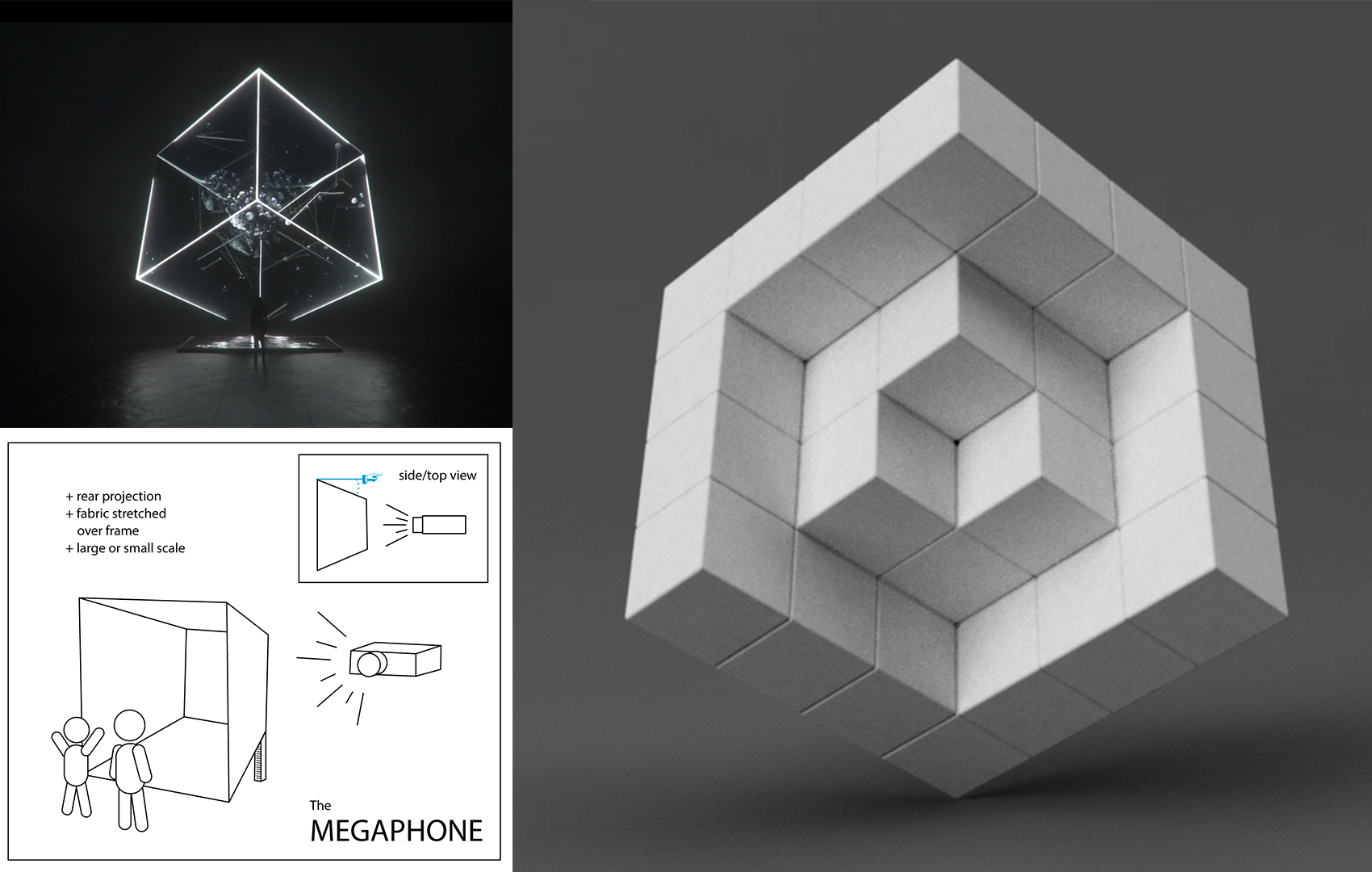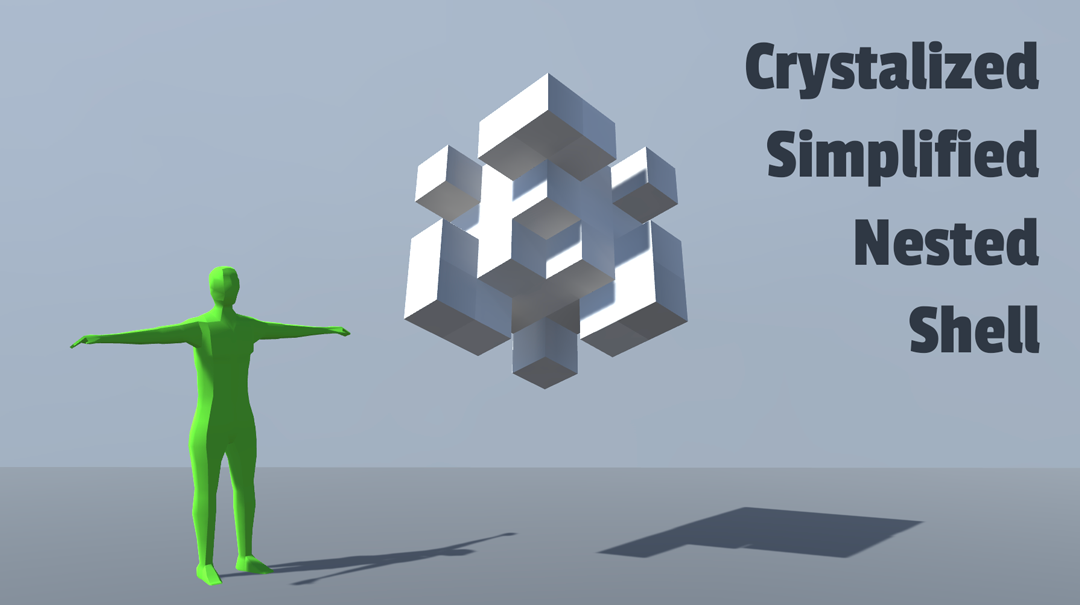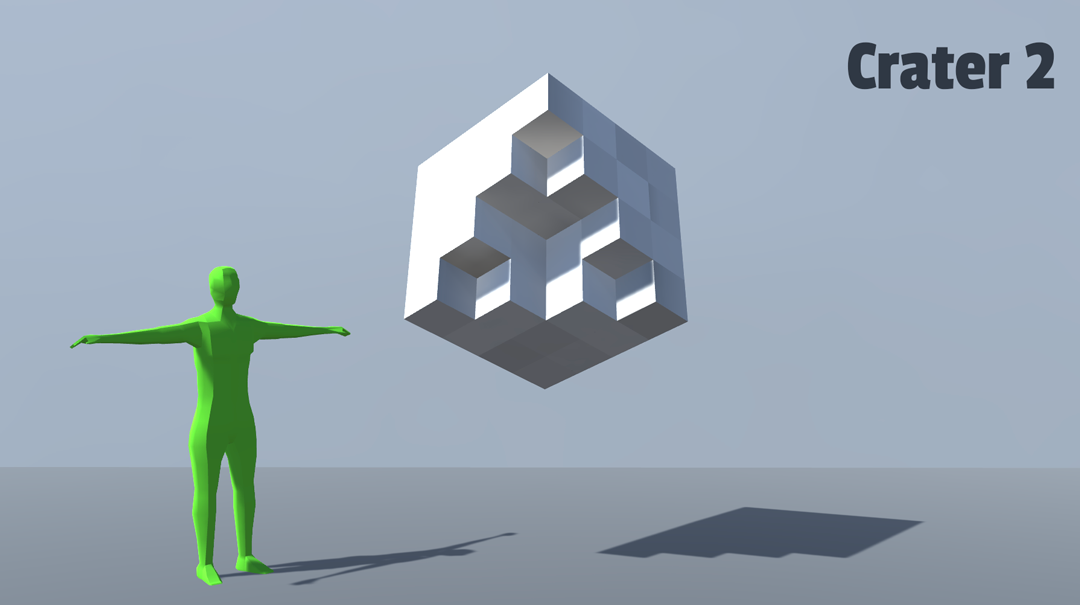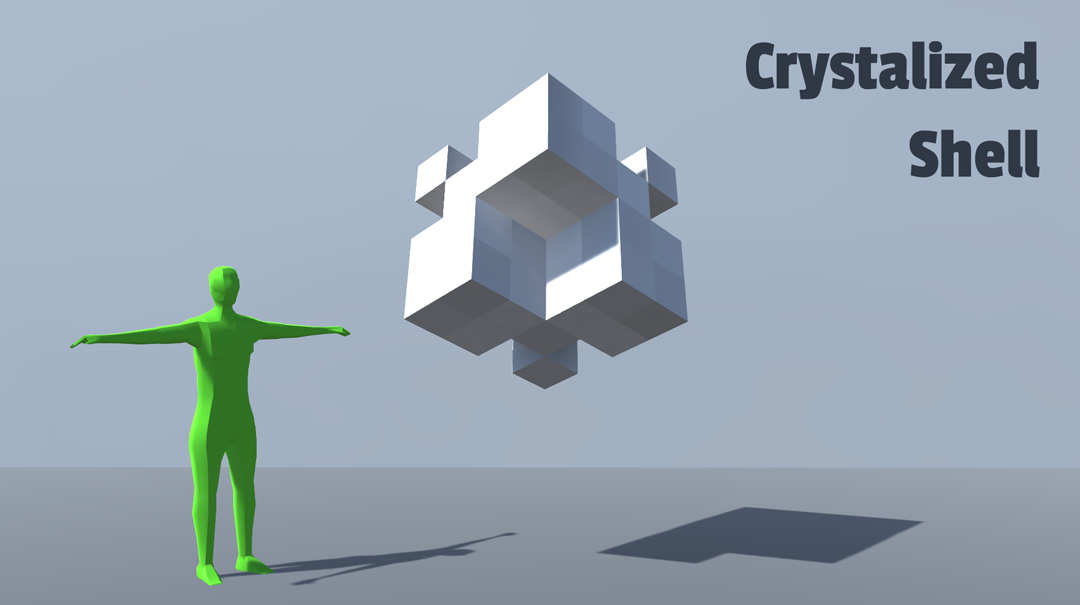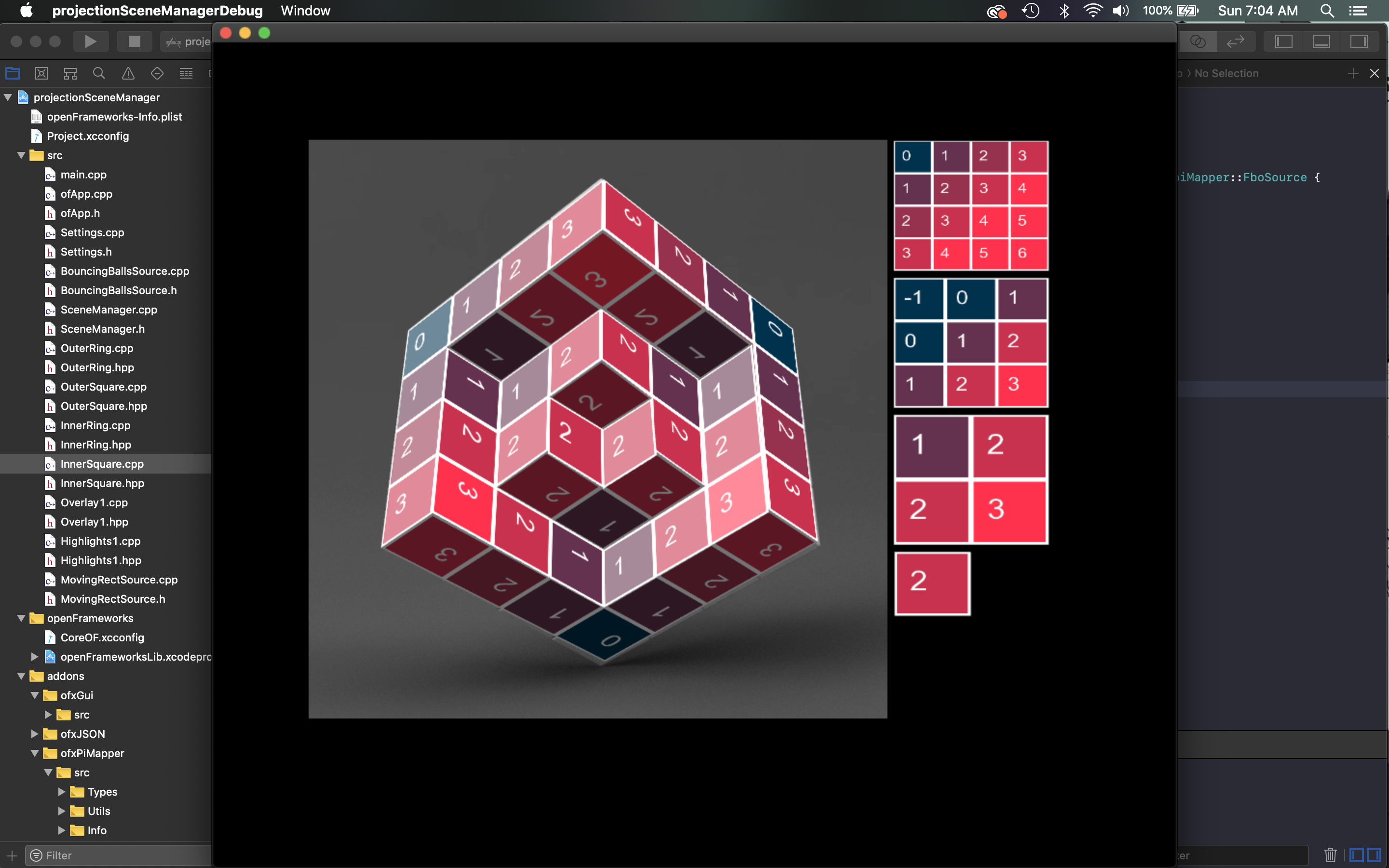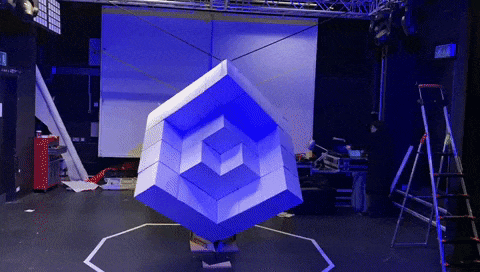Square Waves
Produced By: Williams Fincannon
Concept
Our group began with a simple idea of wanting to craft a giant cube out of smaller cubes and then suspend it from its apex. The overall form was inspired by Ouchhh's Data Gate (see below - top left), our group's personal sketches (see below - bottom left), and converstations had amongst ourselves when we initially came together. Once we agreed on this direction, we decided removing some of the smaller cubes would be necessary to create a more interesting surface to project on. I created a handful of different variations within Unity and after a few rounds of voting, we decided on the “nested shell” which would later be christened “Too Big to Fail”. I then recreated and rerendered the shape in Fusion 360 to give us a guide for mapping and designing our projects (see below - right).
Inspiration
For this project, I wanted the content to be directly influenced and inspired by my group's final shape design. I felt it was important to ensure the shape itself was not treated as merely a surface to be projected on, but as an equal part in the overall experience of the artwork. With this is mind, I decided to accentuate its features by highlighting each individual face to give the impression of each cube being illuminated from the inside.
Goals
Early on in the conceptualization stage, I knew that I was interested in creating a way to compose and organize visuals that would allow me the same amount of control and experimental freedom as in certain DAW’s that I had become familiar with. I spent the first several weeks devising a way to build a sequencer for my FBO sources and figuring out the best mapping strategy for a shape with nearly 50 faces.
Strategy
I began brainstorming ways to limit the number of quads I would need to cover the entire shape. My first solution involved dividing the shape into 18 planes which I hoped would simplify the coding and mapping process. Later on, I realized that since I was building a sequencer, using scenes would be unnecessary and therefore, mapping each of the 48 faces would be a practical solution. I discovered that if I used one fbo source and mapped each face to a different part of the texture, it would allow me to easily create and experiment with many different patterns.
Process
The coding process was filled with a tremendous amount of roadblocks. Seemingly simple problems took days--sometimes weeks to solve, and some I have yet to figure out a solution for (I spent the 3 days after Christmas trying to make my FBOs transparent!). As is the case with most projects, I had to cut quite a few concepts from the final version due to time constraints and unforseen issues with coding the sequencer. Though I am happy with the simplicity of the final version, in future iterations I would like to add color and complexity. Building and suspending the cube proved to be challenging as well due to its size, tool availability, and uncertainty about the cube's structural integrity. Fortunately, our group was able to complete and suspend the form almost exactly as we had originally intended.
Resources
Code: https://github.com/fincannonwb/squarewaves
Music: Is_17l by Faidel
Concept Image (top left): Data Gate by Ouchhh
All borrowed code used in the final version was derived from:
of_v0.10.1_osx_release/examples/math/periodicSignalsExample































































